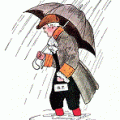More speakers...
Wharfdale Shelton XP2 this time
(Wanted some smaller units in the collection)...
Not too bad at all. Sound promising, tho treble a bit harsh...
Maybe a summer jaunt to RFC towers for a crossover rejuvenation...?
(Wanted some smaller units in the collection)...
Not too bad at all. Sound promising, tho treble a bit harsh...
Maybe a summer jaunt to RFC towers for a crossover rejuvenation...?

Comments
Could be a Wharfdale double header with the Glendales.
Just plugged the Goodmans back in...
Crikey, you did a job on those Paul!
Simples.
=D>